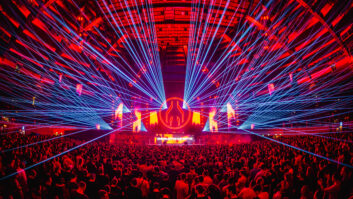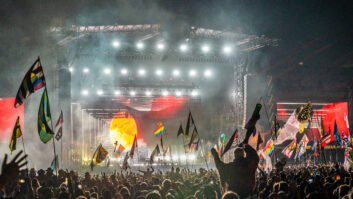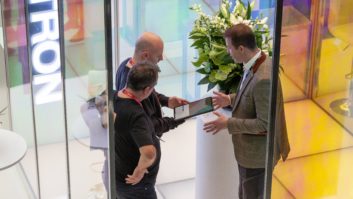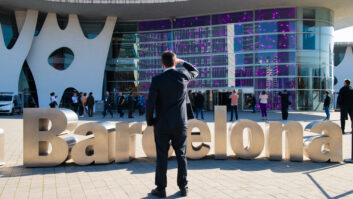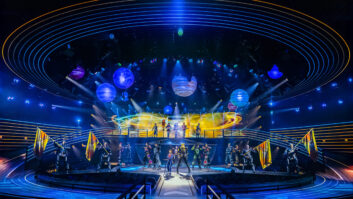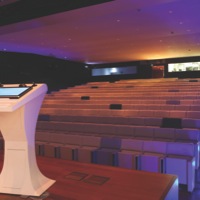
A recent study by German marketing organisation Licht.de estimated that 19% of energy consumed in the European Union is used in lighting. Some 80% of that amount is used for commercial purposes, the remainder in domestic installations.
The European Commission, along with other regulatory bodies around the world, is slowly introducing regulations to reduce energy consumption. European directives have banned certain types of fluorescent and incandescent lamps, with restrictions planned on others including common halogen lamps, which are installed widely in offices. Moving forward, the use of lighting controls will be encouraged in an attempt to increase efficiencies still further.
The Energy Performance of Buildings Directive dictates that any commercial building offered for sale or rent after 2018 must also have an energy performance certificate indicating how efficient it is. This will be an important aspect in the saleability of commercial buildings in future, as Guy Simmonds, head of sustainable solutions, Europe for Lutron, points out: “It will not be permissible to sell or lease buildings with an energy efficiency of grade E or less. The directive covers a wide range of building parameters, of which lighting is one factor, but it is a huge driver for facilities management teams to evaluate behaviour of staff and plan the lighting system accordingly to reduce the energy overhead.”
It is no wonder then, that fine control of lighting can greatly increase the energy efficiency of a building, make it more commercially marketable as well as provide a far more attractive and productive environment to staff, visitors and customers.
The market for lighting controls in North America and Europe alone is estimated to reach $38 billion by 2015, driven by a growing demand for lighting control solutions in new building and retrofit applications that is expected to propel the market even further.
Licht.de further calculated that by using modern, energy-efficient luminaires and judicious control of their output by presence dimming and daylight shutdown, a massive 75% saving of energy could be achieved compared with old installations of the 1970s and 1980s. This means that it is of economic benefit to install lighting control systems in new buildings, where the incremental cost of adding a wired network is relatively low. In some cases there is no additional cost as network-controlled lighting is simpler to fit than systems that require local mains switching. Many of the controlling and sensing elements used in lighting control systems are low-power devices that use wireless RF for communication. According to the UK-based Lighting Industry Association, it is usually economic to retrofit standalone lighting controls in existing buildings where adding a full networked system would be too expensive. Of course if a new lighting system, or other refurbishment, is necessary, then a full control system is likely to be the best option.
Costs and savings
Capital expenditure budgets will often necessitate a trade-off between installation cost and potential savings. “In a typical, large office complex, the energy saving achieved by use of well-configured lighting control systems can easily be 20% to 40% and in some cases as high as 50%, depending upon the amount of investment made into the system,” explains Ronald Gelten, director, business development manager EMEA at Philips Dynalite. “Return on investment will depend upon the amount of investment made. For example, a basic system will cost less but achieve lower savings and a lower ROI than a more complex system. The readiness to invest in capital equipment and the amount of committed expenditure will affect this.”
Lighting circuits are generally segmented into several zones across the floor of a building. This allows independent control of lights based on occupancy conditions and prevailing light levels. During daytime, for example, light sensors detect ambient light in the zone and dim luminaires accordingly. At night when the building is only partially occupied, motion and presence detection sensors combined with intelligence within the controller can calculate the zones that need to be illuminated. This takes a number of factors into account, as Gelten outlines.
“A small group of people in one area will require full light levels around them but in adjacent areas the light can be dimmed,” he explains. “However it is not shut off completely, these areas are still in their peripheral vision so the light level will be reduced to around 30%. Further out that level will fall off more. It is important to provide an environment that is comfortable and feels secure to inhabitants, which is why it is not usual to extinguish all lights. The system can also calculate their routes to facilities and provide low levels of lighting until the sensors detect movement there and boost it. Other routes through other floors of the building need to be fully lit all the time for convenience and safety. These will be on separate zonal circuits.”
Despite the high level of automatic control and centralised management of lighting, all systems should offer local user control to allow individual control of lights or zones. The control system will still monitor light settings and respond accordingly, detecting the presence of people in rooms and resetting light scenes to the scheduled settings and thus preventing users from inadvertently leaving empty rooms illuminated.
Local knowledge
Local control of lighting is a contributing factor in the reduction of energy. “Where people have individual control of lights they will generally set them at a level below full brightness and will switch them on far later than expected as the outdoor light level falls,” says John Aston, lighting consultant at the Lighting Industry Association. “The more control individuals have over their lighting environment, the more is saved, so they should be involved.”
Another aspect that affects humans is the colour of the light output, particularly in LED devices with phosphor reflectors. The light produced will affect the colour rendition of illuminated objects which can have an adverse effect: changing the colour of interior design materials and even making food look unappetising. This characteristic is measured to some extent, as Erik Larsen of ETC explains: “We have to fully understand the importance of high-quality lighting and good colour rendering, which are represented by the Colour Rendering Index (CRI) and Colour Quality Scale (CQS), and carefully consider the significance of how the human visual system perceives colours. This knowledge is critical in LED product development and lighting design.”
Lighting control on its own will provide savings, but for the greatest benefit it should be integrated with other building controls and should take environmental conditions into account. A study carried out by the Building Environments Analysis Unit of the University of Sheffield found that simply making use of daylight can reduce lighting costs by 19% in a typical office. “There is a wide range of factors that work together to contribute to the overall energy requirements and carbon footprint of a building and by tightly controlling them as a single unit we can achieve the most efficient and effective environment within a building,” explains Mark Tallent, international product manager for lighting and building controls at Crestron. “But to maximise efficiency and return, lighting control needs to be fully integrated with other energy management. There is very little sense in lowering blinds on a sunny day, only to turn the lights on inside. Ideally a system should provide total integrated control and monitoring of heating, lighting, ventilation and interior and exterior blinds so that they all work in cohesion, maximising natural resources and providing the best interior environment and energy efficiency.” Some systems now also take notice of geographic location and building orientation to adjust the system according to the time of year.
Initial set-up should be supplemented by ongoing configuration and adjustment as the building use settles down and changes over time. Aston adds: “Return visits are crucial to adjust the system to take account of how the building is run and operated after initial commissioning and this should include comments and feedback from occupants. This often does not happen, through budget restraints or lack of local staff training; there are new buildings in Canary Wharf that have sophisticated lighting control systems that are visibly not set up to reflect the actual operation of the building.”
Sharing data
Information from the lighting control system is useful to other building management systems. “Lighting systems have a great deal of capability over controlling the lighting in a building, far more than where a building management system is extended to control the lights,” explains Aston. “Information gained within the lighting system can be extremely useful to other systems, for example presence and motion sensors indicate which areas need air conditioning. Presence sensors can feed back into the alarm system to detect people moving around out of hours. In this case the response is to investigate the disturbance, rather than simply to switch on lights.”
step by step
The initial installation of a lighting control system is not the final step, particularly when integrated with other services. “Continuous ongoing monitoring and fine tuning of all services in conjunction is what really adds to the benefits of these integrated systems, particularly as the operations within the building settle down,” says Tallent. “For example, the ability to switch and control heating, blinds and equipment in meeting rooms will be influenced by the way they are to be used, but ideally should be managed to make maximum use of natural conditions around those times; even when the rooms are not in use. So blinds will be automatically lowered in the summer to keep the room cool and raised in the winter to use solar heating, with final adjustment carried out, again automatically, just before a meeting is scheduled according to the linked room booking system.”
Lighting control combined with building management and AV system control is a fundamental element of future installations, but we are not at the point of comprehensive integration, as Dave Webster, CTO of distributor RGB Communications, points out: “Integrators rarely get to specify the lighting control systems within commercial buildings and many avoid the lighting system entirely. As lighting and BMS systems become more network controllable, we might expect easier integration paths.”
www.beau.group.shef.ac.uk
www.crestron.com
www.etcconnect.com
www.licht.de
www.lutron.com
www.philips.com/dynalite
www.rgbcomms.co.uk
www.thelia.org.uk
